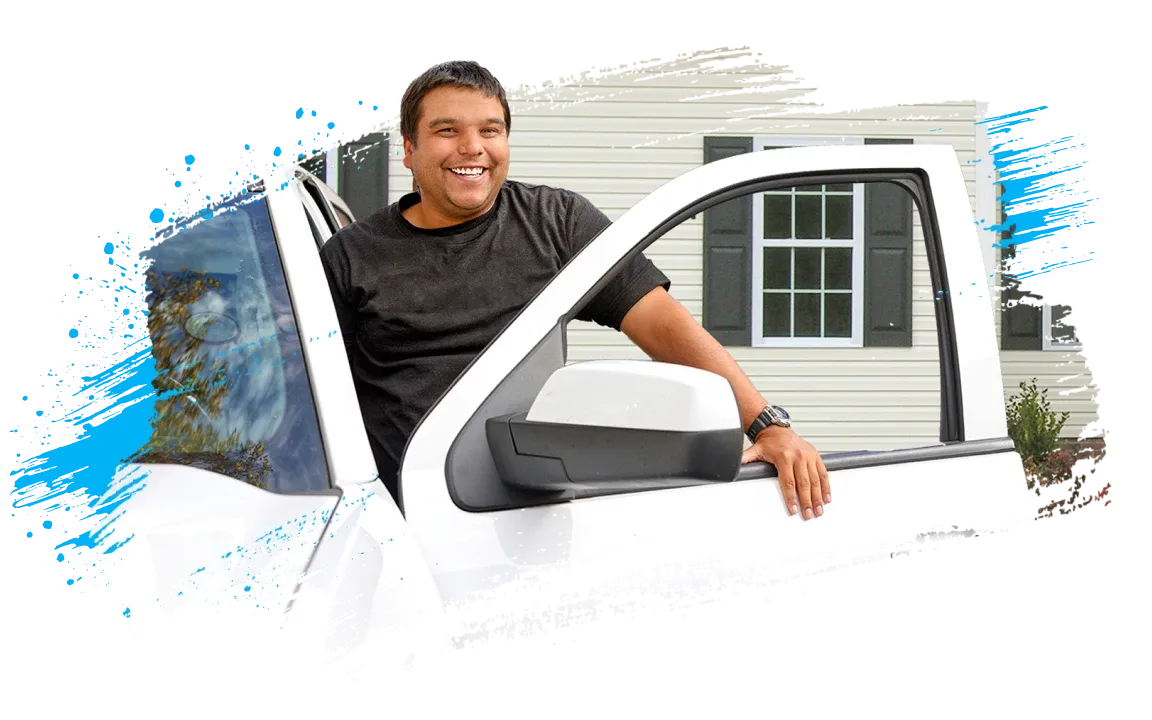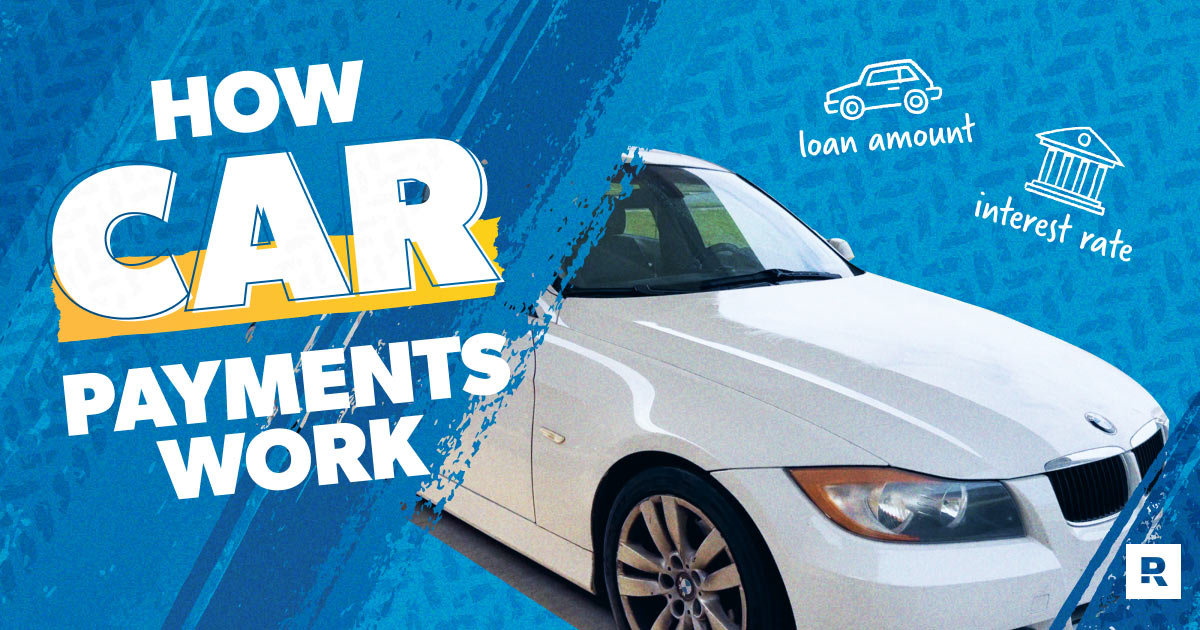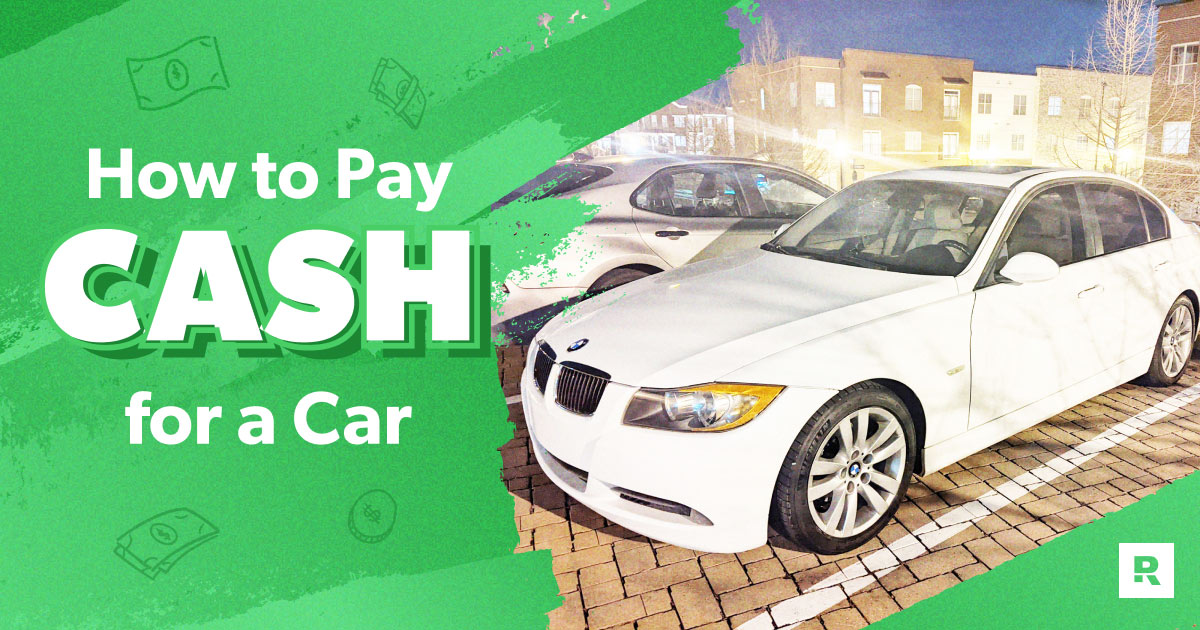
Is It Better to Buy a New or Used Car?
Shopping for some new wheels? We’re breaking down the cost of new vs. used cars—and how to make the right choice for your budget.
Use our free auto loan calculator to estimate your monthly car payment—and how much a car loan will really cost you.
Only one way to be sure. Get EveryDollar. This budgeting app makes it easy to organize and plan out all your expenses so you know how much you can spend each month on your car (and everything else).

The car price is how much you think you’ll pay for the car (or borrow, if you plan on financing). Keep in mind, the sticker price doesn’t include other costs like sales tax, dealer fees or DMV fees.
The down payment is how much money you pay up front when financing a car. The bigger your down payment, the lower your monthly car payment will be. This is because you don’t have to borrow as much money to “buy” the car.
The trade-in value is the amount a dealership will give you for your current car if you buy another car from them. The dealership decides how much they think your car is worth, and they’ll take that amount off the price of the car you’re buying. Tools like Kelley Blue Book can help you estimate your car’s trade-in value. But remember, the dealership’s goal is to get your trade-in car for cheap and then resell it at a higher price. So, you typically make more money when you sell a car privately versus trading it in.
The loan term is the length of time you have to pay back the loan. Most auto loans range from 24 to 84 months. A longer loan term may give you a lower monthly payment, but you’ll also pay way more in interest.
Interest is how much your lender will charge you to borrow money for a car. That’s right. It’s extra money. That you have to pay. (No wonder car salesmen start hitting you up about car financing options as soon as you hit the lot.) Your interest rate is a percentage of the total loan, tacked onto your monthly payment. If you don’t know what interest rate you’re approved for, you can use the averages: 6.73% for a new car loan and 11.91% for a used car loan.1

Here’s the deal: Just because you can afford the monthly payment, it doesn’t mean you
can afford the car. Follow these steps to figure out exactly how much you can spend on
a car.

Take inventory of what money you have right now to put toward a car—including what you have in savings and your estimated trade-in value if you’re replacing your current car. Whether you’ve got $15,000 or $1,000, you need to know how much cash you’re working with.
And as a general rule, the total value of all your vehicles shouldn’t be more than half your annual income. That’s because you don’t want too much of your wealth tied up in things that depreciate (or go down in value). And cars depreciate big time. So, if you make $60,000 a year and you already have a car you bought for $20,000, that means your budget for an additional car should be no more than $10,000.

You might think the only way you can buy a car is if you take out a car loan. But it’s not your only option. In fact, car payments are what’s keeping many Americans broke. So, what’s the best way to buy a car? With cash! Yes, we’re serious. And yes, it’s possible.
Paying cash for a car saves you thousands of dollars in interest and keeps you from buying too much car for your income. Plus, you won’t be chained to a gigantic car payment for years on end.
So, instead of asking, “Can I afford the monthly payment?” ask yourself, “Can I afford to buy this car with cash?” This probably means you’ll have to narrow your search to cheaper used cars. But there are plenty of good, reliable used cars out there to choose from (plus they keep their value way better than a brand-new car).

How soon do you plan to buy a car? If you need a new car ASAP because yours broke down, shop around for cars that you can pay cash for (again, we’re not messing around with car payments here). Otherwise, if you’ve still got a working car, you can keep driving it while you save up for a new one.
Here’s how you save for a car: Research the price of the car you want. Decide on a time frame you want to get the car by (six months, one year?). Then divide the total cost by the number of months to get your monthly savings goal. Unlike a car payment, this is you paying yourself . . . interest-free. And you’ll be paying cash for your next ride in no time!
Car payments are calculated by dividing the total loan amount (plus interest) by the loan term (the number of months it will take to pay off the loan). Even if you can afford the monthly payment, you always pay more when you finance a car because you’re also paying interest.
Your interest rate for a car loan depends on several factors including your credit score, debt-to-income ratio, loan term, down payment and car age. The average interest rate is 6.73% for a new car loan and 11.91% for a used car loan.
Buying a used car is always the better choice financially. Used cars are less expensive overall, and they don’t drop as fast in value as new cars do. Plus, new cars aren’t always more reliable. In fact, some newer cars (especially models in their first year of production) are among the least reliable cars you can drive.
The best time to buy a car is when you can pay cash for it. But you’ll usually get the best deals during holidays, at the end of the month and at the end of the year (when dealerships are trying to meet their sales goals). The beginning of the year can also be slower for car sales, which may be a good time to negotiate prices.
Finding the right insurance at the right price can be a hassle. Let someone else do it for you! A RamseyTrusted® insurance pro will shop the market to get you the best coverage for your new ride.


Shopping for some new wheels? We’re breaking down the cost of new vs. used cars—and how to make the right choice for your budget.

Thinking about buying a new (or new-to-you) car? Find out what you’re signing up for when you take out an auto loan—and how much your monthly car payment will really cost you.

So you’re wondering how to pay cash for a car—as in the steps to make it happen and if it’s even possible these days. Good news: It's totally doable and saves you stacks of cash. Let’s find out how.
Car Price: The car price is how much you think you’ll pay for the car (or borrow, if you plan on financing). Keep in mind, a car’s sticker price doesn’t include other costs like sales tax, dealer fees, or DMV fees.
Down Payment: The down payment is how much money you pay up-front when financing a car. The bigger your down payment, the lower your monthly car payment will be. This is because you don’t have to borrow as much money to “buy” the car.
Trade-In Value: The trade-in value is the amount a dealership will give you for your current car if you buy another car from them. The dealership decides how much they think your car is worth, and they’ll take that amount off the price of the car you’re buying. Tools like Kelley Blue Book can help you estimate your car’s trade-in value. But remember, the dealership’s goal is to get your trade-in car for cheap and then resell it at a higher price. So, you typically make more money when you sell a car privately vs. trading it in.
Loan Term: The loan term is the length of time you have to pay back the loan. Most auto loans range from 24 to 84 months. A longer loan term may give you a lower monthly payment, but you’ll also pay way more in interest.
Interest Rate: Interest is how much your lender will charge you to borrow money for a car. That's right. It's extra money. That you have to pay. (No wonder car salesmen start hitting you up about car financing options as soon as you hit the lot.) Your interest rate is a percentage of the total loan, tacked onto your monthly payment. If you don’t know what interest rate you’re approved for, you can use the averages: 6.73% for a new car loan and 11.91% for a used car loan.1